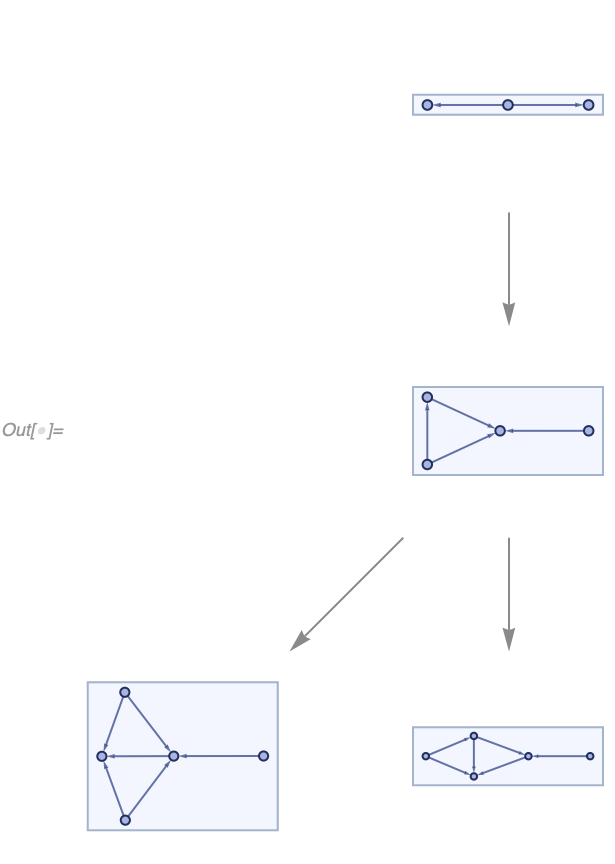Keep in mind, evolution is not unique (as this is not a causal invariant rule):
Specifically, in the default evolution order, we get the result from the paper:
In[] := WolframModel[{{x, y}, {x, z}} -> {{z, w}, {y, w}, {x, w}, {x,
y}}, {{1, 2}, {1, 3}}, <|"MaxEvents" -> 2|>]["StatesPlotsList",
VertexLabels -> Automatic]

If, however, we use a different event ordering function, we get the evolution you found:
In[] := WolframModel[{{x, y}, {x, z}} -> {{z, w}, {y, w}, {x, w}, {x,
y}}, {{1, 2}, {1, 3}}, <|"MaxEvents" -> 2|>,
"EventOrderingFunction" -> "ReverseRuleOrdering"]["StatesPlotsList",
VertexLabels -> Automatic]

You can use MultiwaySystem to find these two are the only possibilities for the first two steps (up to isomorphisms):
In[] := ResourceFunction["MultiwaySystem"][
"WolframModel" -> {{{x, y}, {x, z}} -> {{z, w}, {y, w}, {x, w}, {x,
y}}}, {{{1, 2}, {1, 3}}}, 2, "StatesGraph",
VertexSize -> 1.3] // LayeredGraphPlot
